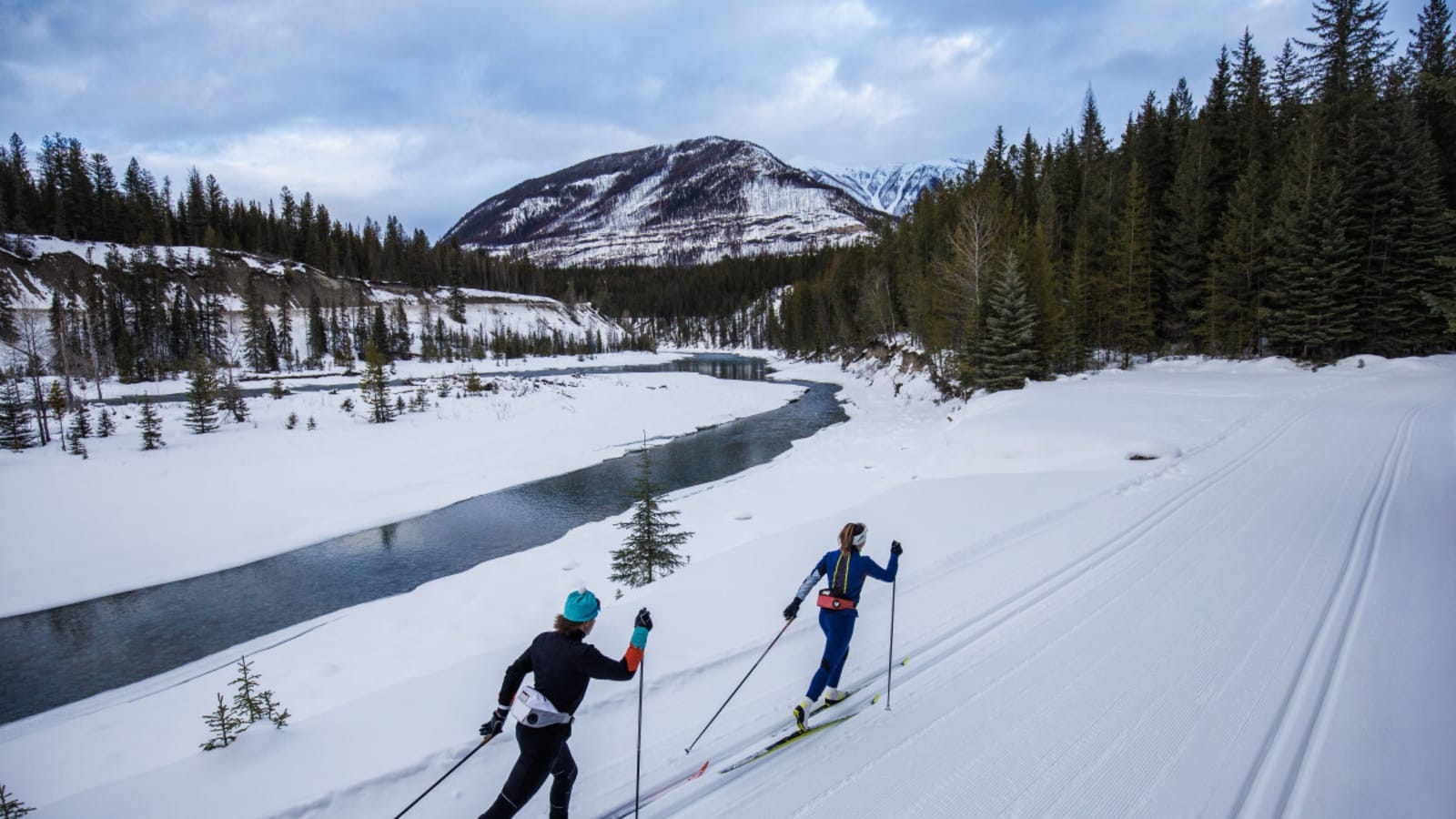
Long before the days of shredding pow or double backflips, skiing was used as a method of transportation. Dating back to 4000 BCE Norway, skiing was the most efficient way to move across snowy terrain for hunting or exploration. While the sport has evolved in many different directions, one particular type of skiing hasn't strayed far from its roots.
Cross-country skiing didn't emerge as an activity, as opposed to a utility, until the 19th century. Today, it's one of the most popular recreational winter activities. Although a bit more approachable and accessible than downhill skiing in many ways, even a seasoned alpine skier might struggle their first time on fish scales.
Cross-country skiing demands technique and a certain level of physical fitness, and it can be an incredible workout or a way to explore an area. Here are a few bits of knowledge for those totally new to the sport.
What's the Difference Between Cross-Country Skiing and Alpine Skiing?
Alpine, or downhill skiing, is done with the skier's heels locked into ski bindings (except tele skiers, but that's another can of worms) and on steeper slopes with the purpose of traveling downhill. In contrast, cross-country skiing is done with the heels free and uses different techniques to propel skiers across a landscape. Where alpine skiing is thought of as a gravity sport like downhill mountain biking, cross country is much more akin to road or gravel biking.
In general, cross-country skiing can be a bit more accessible because you often don't need a lift ticket or ski pass; it can be done in a wider variety of areas and requires less equipment.
What Are the Types of Cross-Country Skiing?
There are two techniques or disciplines in cross-country skiing. The first is classic style, which is done on tracks with two grooves groomed into the snow. (Think kind of like roller coaster tracks but made of snow!)
Skiers propel themselves by gliding one ski forward on the track and pushing with a ski pole in the opposite hand. You can start by just shuffling the skis forward to get used to the motion before adding in a true glide. Classic style is great for people looking to try out XC skiing or using it to explore trails.
The other technique is skate skiing. Aptly named, skate skiing uses the same motion as ice skating or rollerblading to glide across snow. In general, skate skiing requires more balance and coordination than classic and is more of an aerobic workout. Skate skis are a bit shorter than classic skis, and the boots are rigid underfoot and extend over the ankle to provide extra support. Poles for skate skiing should be the same height as your nose or ears.
What Is Nordic Skiing?
While the term 'Nordic skiing' is used as an umbrella term for all cross-country skiing, technically, it describes skate skiing and ski jumping.
Also under the competitive Nordic skiing category are Biathalon events and Nordic jumping. In Biathlon races, athletes skate ski with a .22 caliber rifle on their back around a track, stopping to shoot five targets between laps. Nordic jumping involves skiers hurdling down a steep ramp on Nordic-style skis with free heels before launching into the air, sometimes going more than 60mph, in a V-shape before landing.
What Kind of Equipment Is Used for Cross-Country Skiing?
Cross-country skis are much thinner and lighter than alpine skis. Minus Nordic backcountry skis, cross country skis also don't have metal edges like the ones on alpine skis. Cross-country skis are constructed to glide forward quickly on flat and uphill terrain rather than perform going downhill.
For classic style, skis have a kick zone under the foot that utilizes fish scales, ski skins, or wax to propel skiers forward and keep them from backsliding. Classic style boots are flexible and have a low collar so skiers maintain a wide range of motion. Poles should be armpit height.
In skate skiing, skis are much shorter and have a glide zone that goes from tip to tail. The boots extend over the ankles and have a rigid sole and are stiffer through the collar to provide stability. Poles are nose or ear height.
In contrast to alpine skiing, cross-country skiers don't usually need helmets, goggles, or as robust of outerwear. Due to the aerobic nature of the sport, cross-country skiers usually want 1-2 light, breathable layers on top and bottom. Soft shells and wind-stopping layers can be great options, depending on the weather. Thinner hats and gloves are also great for keeping extremities warm but not too sweaty.
More must-reads:
- Five worst signings from the first day of NHL free agency
- Two notable ex-Lakers figures could join Mavericks
- The 'NBA all-time assists leaders' quiz
Breaking News
Trending News
Customize Your Newsletter
 +
+
Get the latest news and rumors, customized to your favorite sports and teams. Emailed daily. Always free!








